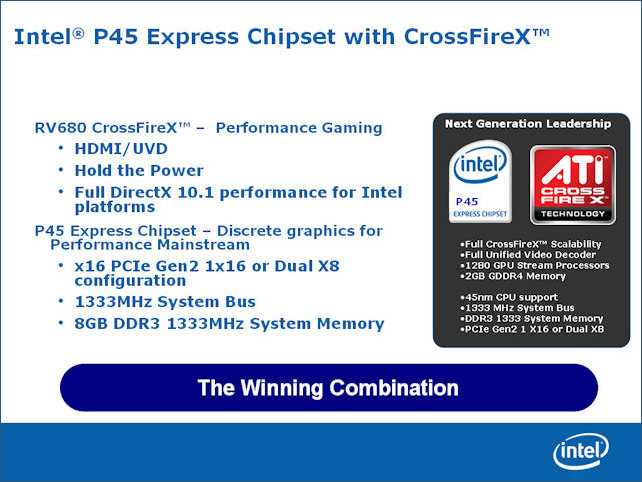P45 Showdown – Asus P5Q Deluxe vs MSI P45 Diamond
Introduction
Â
Today we will be pitching two hardware heavyweights against one another in the first head to head between two motherboards based on Intel’s new ‘Eaglelake’ P45 chipset.
Â
Being the direct replacement/refresh for its highly praised and successful predecessor, the ‘Bearlake’ P35 chipset, the P45 is pitched to be the logical evolution for enthusiasts, providing an increase in FSB support to a now official 1600mhz. PCIe 2.0 is now supported too, along with the incorporation of an updated Southbridge to the ICH10/10R.
Â
ATI’s CrossfireX is now also supported, albeit in an 8+8 configuration, reserving the higher bandwidth 16+16 for the X38/48-based motherboards. While 8+8 lanes have been seen before on certain variants of P35 (Asus Blitz), this was done by the use of a separate Crosslinx bridging chip and these boards were as rare as hen’s teeth. Most P35 based boards were in a 16+4 configuration with the 2nd PCIe slot gererally crippling a dual card setup. With the P45, CrossfireX is supported natively and will be widely available upon release rather than just limited editions. This could give ATI a leg-up in helping them crack Nvidia’s current stranglehold on the GPU market. If I was a cynic I might think that Intel may also be paving the way for their own ‘Larabee’ GPU’s…but that’s another story.
Â
Â
So in the red corner, representing the tried and tested DDR2 format, we have the Asus P5Q Deluxe. With a thoroughbred pedigree and being widely regarded as one of the best manufacturers of P35 & X38 based boards, it is of no surprise that Asus are seen as the dominant force in motherboard production.
Â
In the blue corner we have the MSI P45 Diamond, which has taken advantage of DDR3 support. While this is a bold move considering the much cheaper DDR2 prices at the time of writing this review, it makes sense in that a high end board should make use of the latest technology. As MicroStar International is hardly a lightweight when it comes to hardware, this should make an interesting battle of silicon and copper, and with both manufacturers taking a different approach to cooling methods, this will hopefully make for an interesting read.
Â
During this review I intend to perform a direct comparison of both boards rather than review each board separately. I will, however, be going into detail showing each motherboards own attributes and possible downfalls. While the Asus P5Q Deluxe is not from the pinnacle of Asus’ P45 releases, not being labelled as a ROG (Republic of Gamers) board, it is pitched as a high end board aimed squarely at the overclocking enthusiast. The MSI on the other hand is at the top of the pile, being labelled as a Diamond Gamers board, hoping to lure you in with its premium features. So please, make yourself a brew and sit back while I put these two boards through their paces and see who can go the distance and be crowned the winner in this OC3D exclusive knock-out match.



